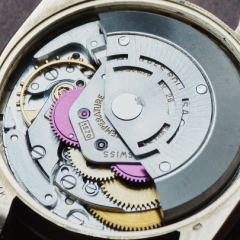Custom Build using Venus 170
-
Similar Content
-
Recently Browsing
- No registered users viewing this page.
-
Topics
-
Posts
-
Hi all, needing a little help. I have an old Casio AQ-321G, but have no idea what battery it takes. I've looked around online, but cannot see anything... I see a 309 stamped on the case back, could this be it....? Can you please help, below are some pictures:
-
By nevenbekriev · Posted
The radial teeth are for hte seconds register, and the other (which is simple and doesn' take away significant torque from the train) for the minutes register. -
The original 6139A manual is very clear in how to disassemble and how to assemble ...... step-by-step. However I haven't seen the 3169B manual, even in the Japanese version around, which clearly highlights the difference in center-wheel. 6139A Seiko Technical Guide.pdf 6139_A.pdf 6139A.pdf 6139b.pdf 6139B repair guide jp.pdf
-
By watchweasol · Posted
Hi as an addition a pertaining to the assembly of a 6319B which will be handy for those working on this caliber Polly's 6139 guide.pdf 6139A.pdf 6139B.pdf








Recommended Posts